Have you ever had to deal with hoof wall separation? It can be upsetting and frustrating to watch your horse’s hooves literally come apart at the seam.
Andrew Bowe, a Master Farrier of barefoothoofcare.com, has a great explanation of what’s happening when your horse’s hoof wall starts to separate:
In a healthy hoof, the laminar line is such a tight bond that it is virtually invisible to the naked eye. Unfortunately, this sole to wall junction can be a weak link, and a large number of domestic horses have hooves that literally come apart at the seam. When this happens, all of a horse’s weight is pushing down on weak, unsupported hooves. The growing hoof wall migrates away from the pedal bone, leading first to the flaring of the hoof wall itself, then to mechanical breakdown of the laminar line, and finally to the separation of the wall from the sole.
When farriers have nothing to nail to in cases such as these, an Easyboot Glue-On Shell can help keep a horse going while the separation is treated.
The photo sequence below shows a horse suffering from hoof wall separation. This horse was stall-bound and unable to perform. After the Easyboot Glue-Ons were applied, the horse was able to compete the next day. She even won the 1.20-meter class!
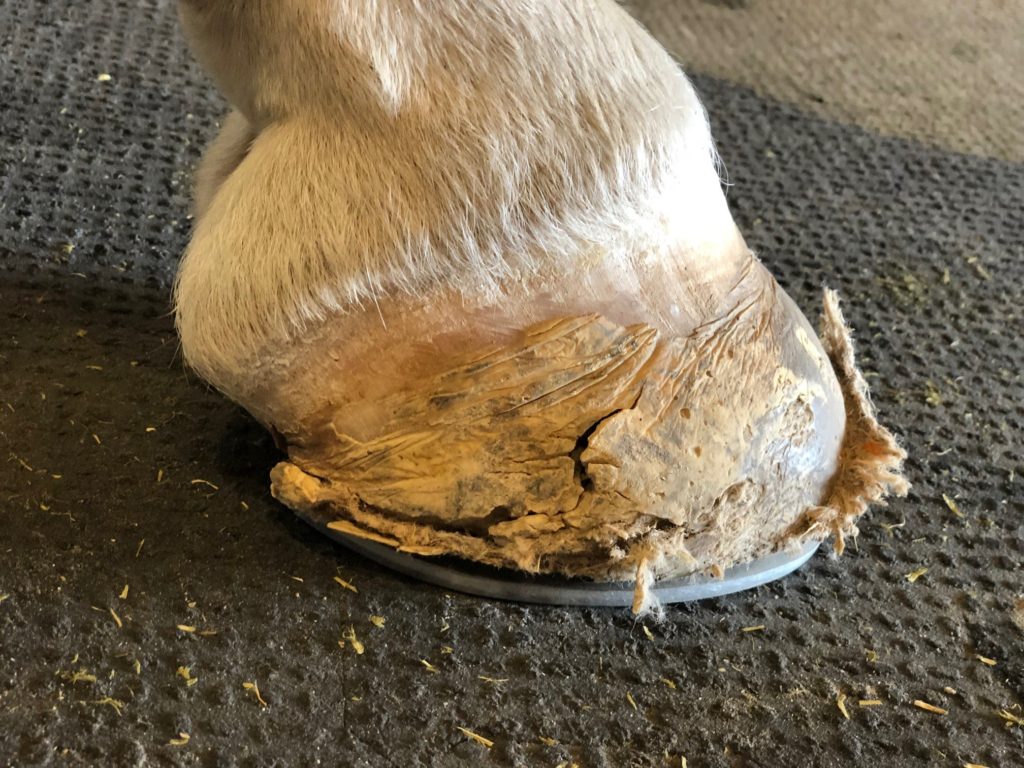
The horse was in a Sigafoos Cuff Shoe. This is a great product, but this horse was tearing them up. This mare is almost 17 hands and really drives from the rear end.
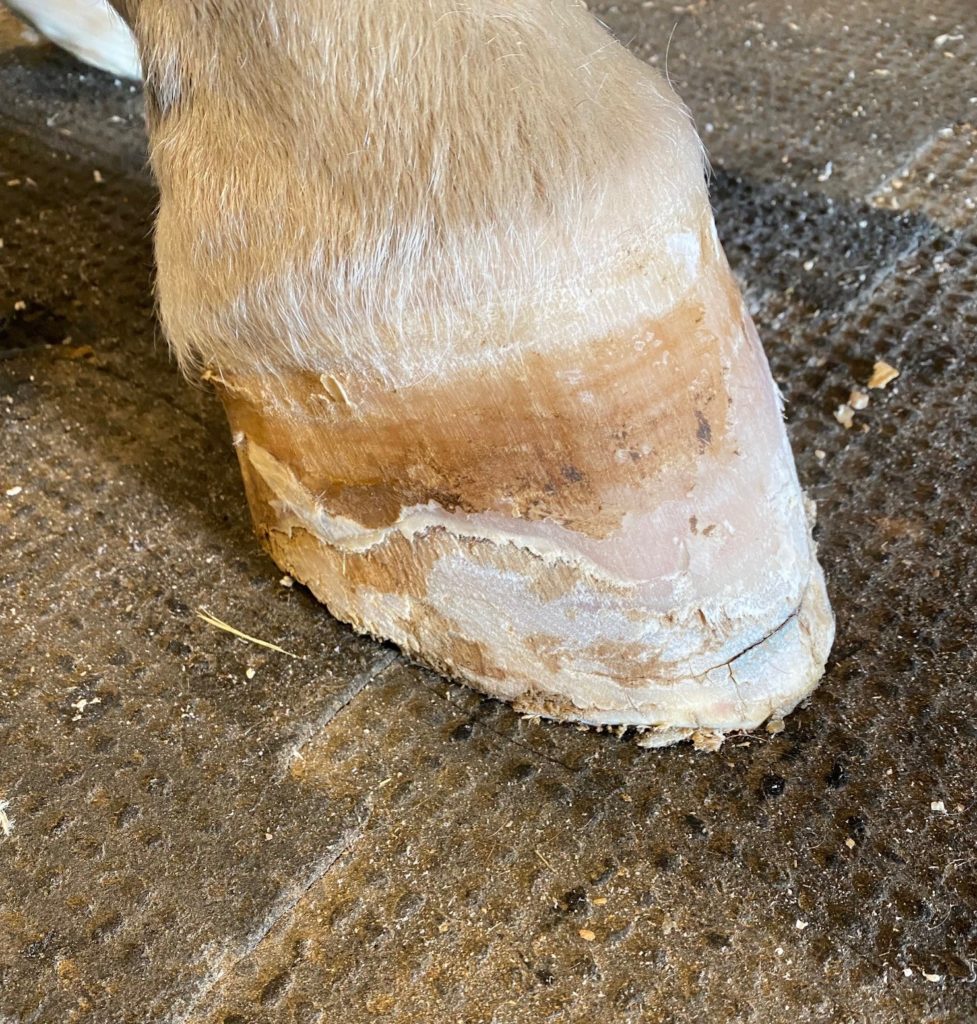
Hoof after the Sigafoos Shoes were removed.
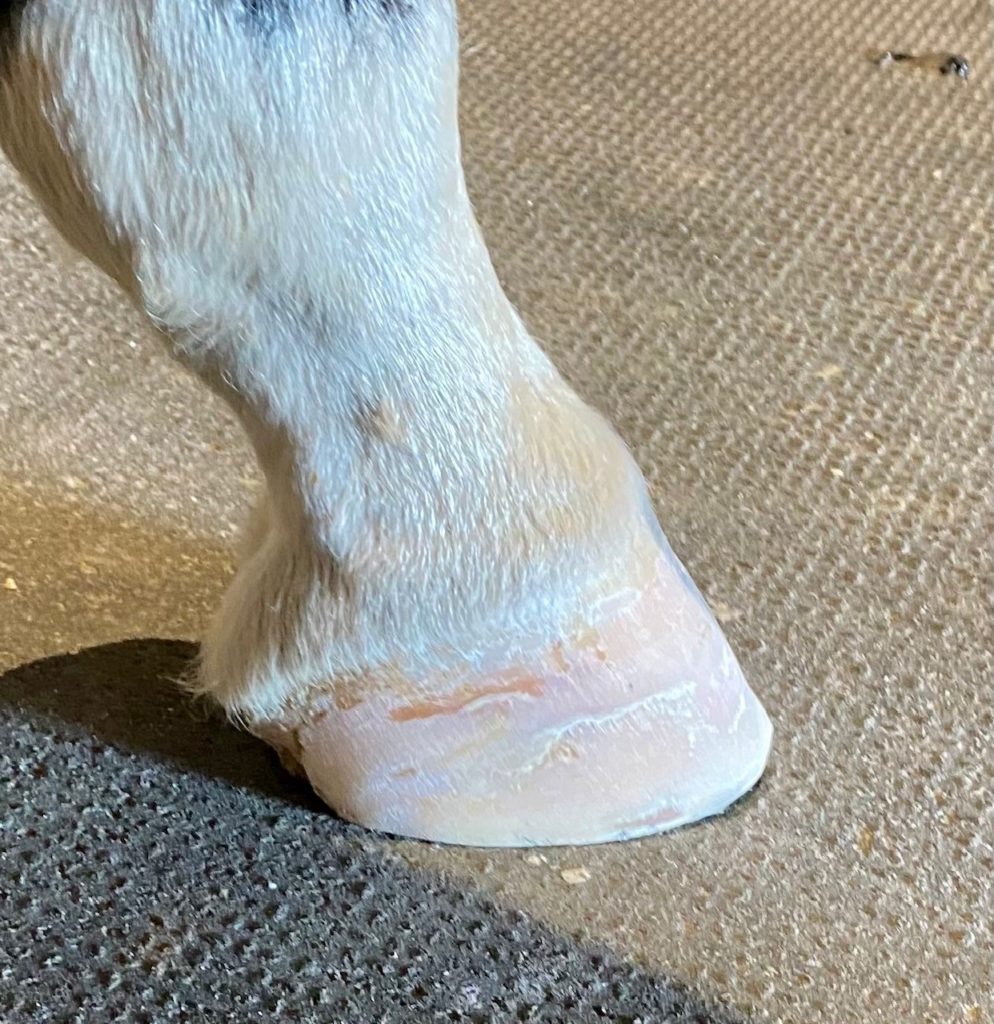
Hoof after a fresh trim.
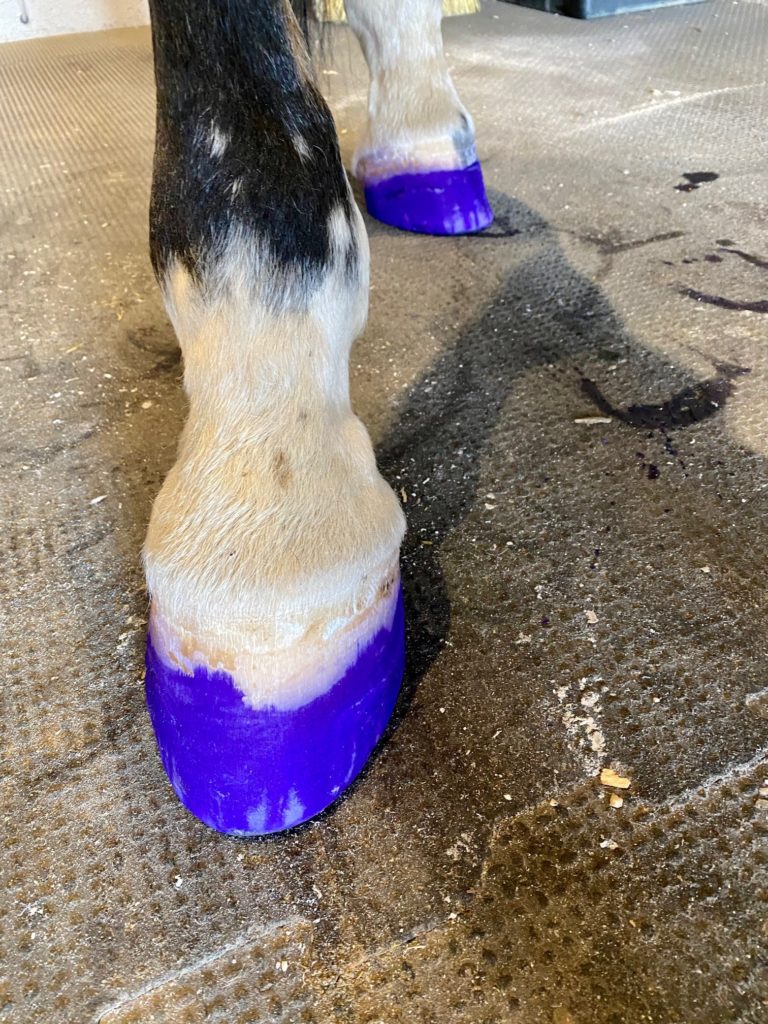
After trimming, the hoof was treated with Thrush Off. The Thrush Off was given 30 minutes to dry and soak in. We then used the Hoof Buffy to rough up the hoof wall and remove any residue left by the Thrush Off so the Vettec Adhere could do its job and stick well.

Easyboot Glue-On Shell applied. We treated the separation first with Thrush Off and used Artimud on the sole.

Days later, the horse and rider win! (Photo taken by Lisa Macri)
This horse went on to successfully compete in several shows in the four weeks following the application of the Easyboot Glue-Ons.* After we pulled these shells, we installed a second set to help the separation continue to grow out. It may take one more set before the separation grows out completely. Check out a video where I demonstrate how to apply the shells here.
Next time you have a horse that can’t be nailed in a traditional way, consider an Easyboot Glue-On shell to keep them going.
*Although EasyCare does not typically recommend using the Easyboot Glue-Ons long-term, we have found that if you treat the hoof with Artimud, 5-6 week cycles are no problem. We are in the process of writing an additional protocol for longer-term use.


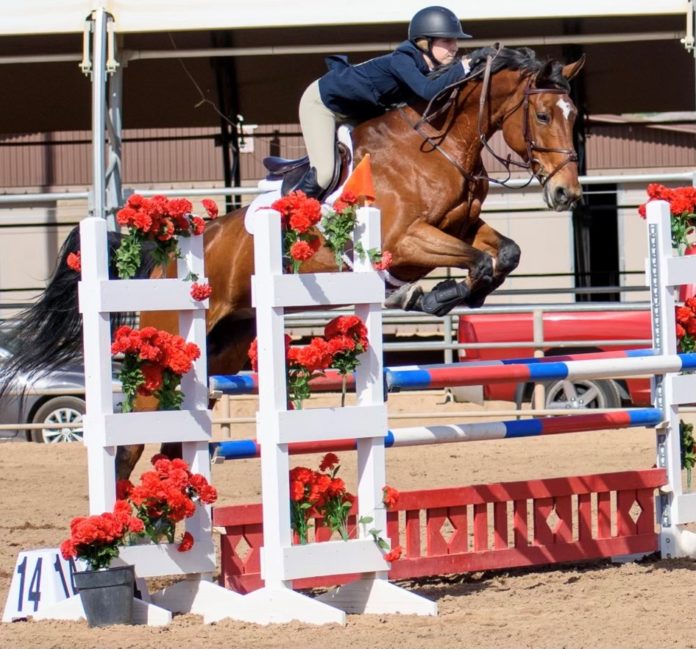



Hi, great progress, great solution. Could you explain what caused the separation in the first place?
The horse came into a wet environment from a dry environment. That started the challenges. The challenges continued because the owner was not able to find a local farrier to help with options.
Comments are closed.